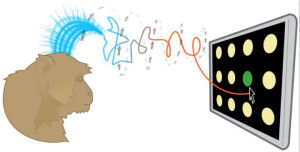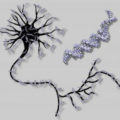
Scientists have discovered a new process for how memories might be stored, a finding that could help explain one of the least understood activities of the brain. What’s more, the key player in this process is a protein that acts just like a prion – a class of proteins that includes the deadly agents involved in neurodegenerative conditions such as mad cow disease. The study, published in the journal Cell, suggests that this protein does its good work while in a prion state, contradicting a widely held belief that a protein that has prion activity is toxic or at least doesn’t function properly.
“For a while we’ve known quite a bit about how memory works, but we’ve had no clear concept of what the key storage device is,” says Whitehead Institute for Biomedical Research Director Susan Lindquist, who coauthored the study with neurobiologist Eric Kandel at Columbia University. “This study suggests what the storage device might be – but it’s such a surprising suggestion to find that a prion-like activity may be involved.”
For this reason, Kausik Si, a postdoc in Kandel’s lab, was surprised to find that a protein related to maintaining long-term memory contained certain distinct prion signatures. The protein, CPEB, resides in central-nervous-system synapses, the junctions that connect neurons in the brain. Memories are contained within that intricate network of approximately 1 trillion neurons and their synapses. With experience and learning, new junctions form and others are strengthened. CPEB synthesizes proteins that strengthen such synapses as memories are formed, enabling the synapses to retain those memories over long periods.
For the study, the team extracted the CPEB protein from a sea slug. This lowly creature has achieved high status in neurobiology because its neurons are so big, they can be manipulated and turned into unusually powerful investigative tools. The researchers fused this CPEB to other proteins that would serve as reporters of activity, and then observed its behavior in a variety of yeast models. The researchers discovered that CPEB altered its form and caused other proteins to follow – functioning exactly like a prion. A second unexpected finding was that CPEB carried out its normal function – protein synthesis – when it was in its prion state.
“This is remarkable not just because the protein executes a positive function in its prion-like state,” says Lindquist. “It also indicates that prions aren’t just oddballs of nature but might participate in fundamental processes.”
The finding contradicts the notion that converting to a prion state is a bad thing, says Kandel. “We show instead that the normal state of CPEB may be the less active state, and the prion state may be the effective way of utilizing the normal function of the protein.”
The work suggests it’s possible that in mammalian neuronal synapses, CPEB’s prion properties may be the mechanism that enables the synapses and nerve cells to store long-term memory, a theory the researchers plan to investigate next. Theoretically at least, prions are perfect for this, says Lindquist. Prions could shift into this state quickly without the energy-intensive cellular mechanics that fuel most protein synthesis. The prion state is very stable and can maintain itself for months, even years.
But, “We still need to demonstrate that this prion mechanism operates not just in yeast but in neuron cells,” says Kandel.
Lindquist believes that these findings will not be the last time prions are discovered to have normal biological roles. In fact, she has long speculated that researchers will discover them to be essential to many cellular functions. Kandel adds that he wouldn’t be surprised if this sort of prion mechanism was discovered in areas such as cancer maintenance and even organ development.


















Comments are closed.